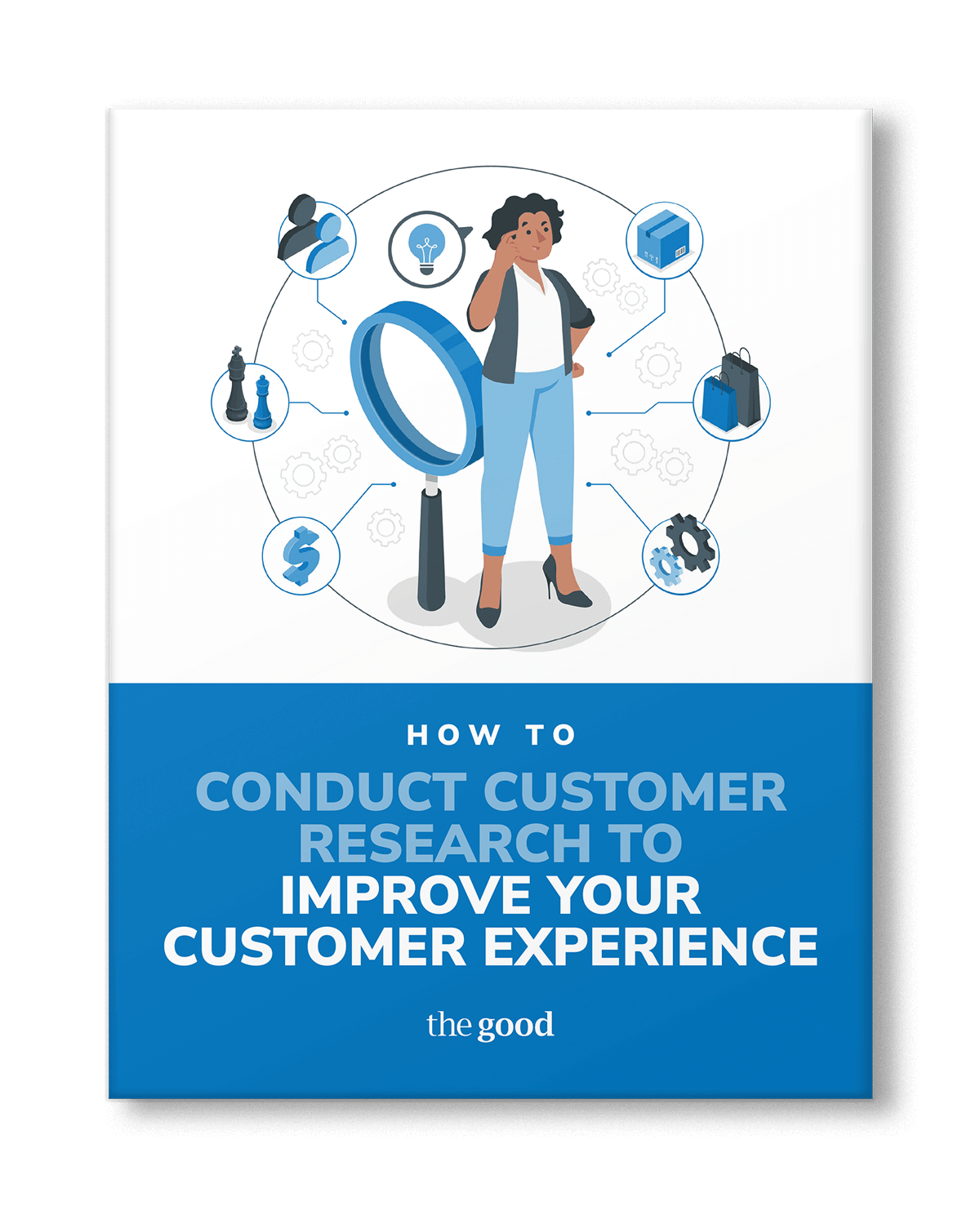
Staying Data-Driven Before, During, And After A Website Redesign
Avoid costly website redesign mistakes. Use data-driven insights to create a website that attracts, engages, and converts your ideal customers.
Imagine you want to renovate your house. Excited, you draw up your own designs, knock it to the ground, and build completely based on your own preferences and gut instincts.
Unless you are an engineer, architect, interior designer, plumber, electrician (and more) all in one, you’ll probably end up with something that doesn’t function in the way you hoped.
Similarly, redesigning a website from scratch requires a team of experts and advanced preparation. If you move forward without considering your goals, you’ll likely end up disappointed. At the end of the day, it can feel good to have a makeover, but you don’t want to build a site on assumptions and gut feelings rather than real insights. That will just leave you back at square one.
The alternative? Discover how optimization can work hand-in-hand with a website redesign process to achieve the results you’re after.
When to pursue a data-driven website redesign
There are plenty of occasions when a site redesign is necessary, including:
- When you rebrand: Rebranding your company will require a website redesign to match your new logo, colors, and messaging. For example, Patagonia’s rebrand put its content and purpose-driven initiatives at the forefront, which required a complete site redesign to reflect this change.
- When your target market changes: If you’ve noticed a change in your best customers or want to attract a new market segment, a website redesign can help you appeal to those people. For example, Airbnb redesigned their website when they realized the priorities of their customers had changed. Travelers wanted “homes around the world” rather than just a place to stay while away. Airbnb created an entirely new brand and website to reflect this change.
- When your tech stack is holding you back: Technology is changing all the time, and it’s easy to go from forward-thinking to behind the times in a matter of months. If your tech stack is holding you back, it might be time for a website redesign that incorporates new software and the latest offerings. For example, 1-800-Flowers is one of the earliest ecommerce brands in the US. When new technologies emerged, the brand redesigned their site to add voice tech and chatbots to make the shopping experience easier.
If that sounds like you, and your company has its heart set on a website redesign, make sure you do it the right way, saving yourself time and money by optimizing throughout the whole process.
What is data-driven website redesign?
A data-driven website redesign is a 5-stage process that keeps your organization user-centered as you build a refreshed digital experience.
It takes intuition out of the equation. A data-driven website design process is like doing math: one plus one equals two. An intuitively designed website is like coaching football: this play could work. In other words, data-driven design is based on observable facts that are validated, but intuitive design is based on ideas and past experience.
Data-driven design relies on real-life observations of how visitors to your website are navigating through the pages and how successfully they complete your goal actions. The process is informed by insight pulled from qualitative and quantitative data, including the actual clicks and movements of your site’s visitors and feedback from your customers.
The 5-stages of the process are:
- Discovery: Leveraging institutional knowledge and primary research, get to know your customer, company, and current site.
- Strategy: Distill learnings into a cohesive strategy, list of goals, and minimum experience standards.
- Wireframe Design: Craft grayscale wireframes to deliver an elevated user experience
- Testing: Vet designs with your target audiences to understand what they like and what gets them to take action. Adjust designs accordingly.
- Branded Design: Apply your branding to design files and pass to your developer for implementation.

Bonus Step: Once you implement the branded design, there is one additional step that you can’t skip: optimization. After you redesign your website, continue to your sixth step of the process and make sure you’re consistently measuring and improving the digital experience. We’ll get into that more later.
What are the benefits of a data-driven website redesign?
Data-driven website redesigns take the guesswork out of the optimization process. Rather than relying on what the team leader or project manager thinks is best, a data-driven strategy relies on carefully derived measurements of what’s actually happening on the site and feedback from customers to inform the process.
By leveraging a data-driven approach, you can expect benefits like:
- Objectively and quickly determined opportunities for change
- Easily determined priorities according to potential impact
- Less waste of resources on changes that won’t work
- Higher ROI because you have success rates at a lower cost
A data-driven redesign isn’t going to fix business problems, but it is certainly part of a high-performing, systematic way of getting better results from your website.
How to Conduct Customer Research to Improve Customer Experience

How to stay data-driven with evaluative research
While many organizations aspire to be data-backed, they often fall short by primarily relying on generative research methods.
Generative methods are great for understanding what’s happening on a website and forming hypotheses about what would work better. For example, heatmap analysis, surveys, data analysis, observational analysis, and more.
Alternatively, evaluative research is used to support ideas with evidence. For example, A/B testing, first-click testing, comparison testing, and more.
Only about 25% of self-reported “data-driven” companies use evaluative research methods (and rarely do they go beyond A/B testing).
But to move forward with confidence that your redesigned website improvements will actually work, you need evaluative research. Evaluative research is how we move from data-informed to data-backed and eventually data-driven.

This is one of our favorite models for helping digital leaders understand the importance of continued optimization before, during, and after a redesign process through both generative and evaluative research methods.
How to stay data-driven with prioritization
Iterating 10% of your site could lead to a 90% increase in performance
On most sites, there are a few areas or pages that contribute the majority of the revenue. Linguist George Kingsley Zipf proposed a theory that focusing on 10% of something can improve the other 90%.
So, you can improve 90% of your site performance, usability, and conversion-related issues by improving the user experience of just 10% of the site. Finding those hidden conversion blockers on a few pages can transform the user experience and jumpstart conversions.
Zipf’s law suggests that you pick out and fix your top conversion barriers and make them better.
So, even after implementing a data-driven website redesign, continue to iterate on that top 10% of your site until you need to audit your whole experience again.
How you’ll avoid common mistakes
Website redesigns can fall into unproductive territory for many reasons. However, two common mistakes are easily avoided when you take a data-driven approach.
Focus on your customer over internal politics
Everyone has an opinion on a website redesign, and those opinions are bound to differ. Decisions are made by the person in charge of that phase of the process. Final approval is given by the top-level staff members after the other opinions have been voiced.
Consequently, the effectiveness of redesigning a website is entirely dependent upon the well-considered input of the project team and the experience, insight, or intuition of the final decision-maker. That approach to the website redesign process sometimes works and sometimes doesn’t. You’re placing a high-stakes bet on your redesign without staying centered on what really matters: your customer.
A data-driven website redesign paired with iterative optimization keeps you focused on the customer instead of listening to the highest-paid person in the room.
Focus on usability over aesthetics
According to a study by Microsoft, the first 15 years of the “mobile revolution” saw the average human attention span drop from 12 to eight seconds – meaning if your website doesn’t grab visitors’ attention quickly, you lose them.
Unfortunately, many website improvement efforts are aimed at making visual improvements to a site instead of finding ways to make it more user-friendly. While it’s probable that an unattractive website design won’t deliver optimum engagement, it’s absolutely certain that a site with a convoluted user experience will yield disappointing results.
Both appearance and effectiveness are important, but usability is more critical than looks. And a data-driven website redesign with supplemental optimization keeps you focused on the user and the usability of your website over aesthetics.
Your website should be your best salesperson
Your website is the most important sales person on your team.
It’s the hub of all your company’s products or services and is a crucial link to your customers. Don’t rely on the blind faith of an expensive redesign to deliver revenue magically. Instead, take small, iterative, and well-tested steps to improve the user experience across your site to make it the best sales avenue possible.
Think of your digital path to sales like a garden hose. If you’ve turned the faucet on full blast and are receiving plenty of visitors, but only a trickle is coming out the other end in the form of goal actions, you know something is plugging or constricting the hose line.
Optimization has the goal of finding those points, smoothing them out, opening the clear path to get results from traffic coming in. And digital experience optimization goes one step further, taking a look at the whole irrigation and plumbing system to pinpoint how to make the whole system flow more freely.
Enjoying this article?
Subscribe to our newsletter, Good Question, to get insights like this sent straight to your inbox every week.

About the Author
Caroline Appert
Caroline Appert is the Director of Marketing at The Good. She has proven success in crafting marketing strategies and executing revenue-boosting campaigns for companies in a diverse set of industries.